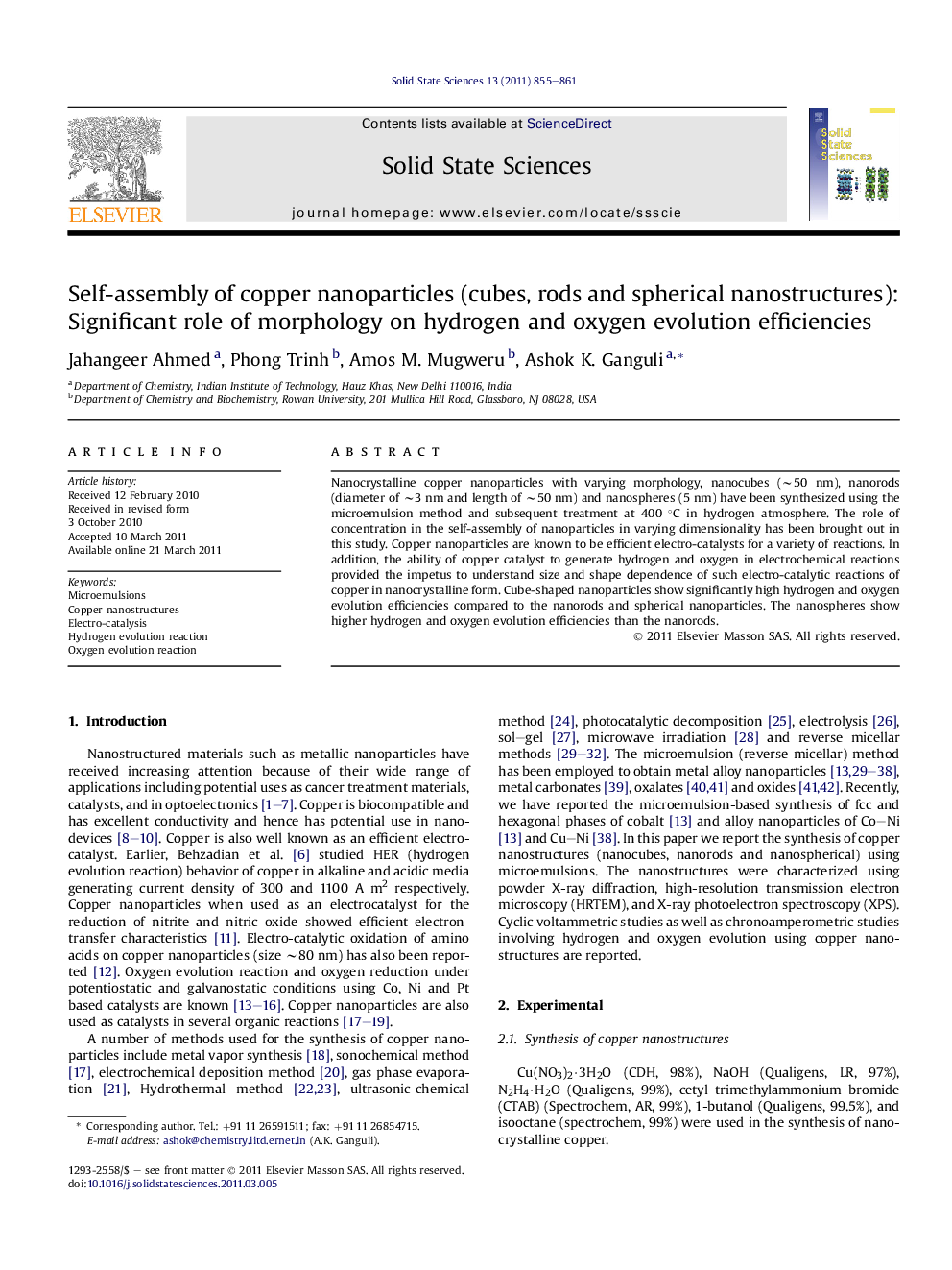| Article ID | Journal | Published Year | Pages | File Type |
|---|---|---|---|---|
| 1505170 | Solid State Sciences | 2011 | 7 Pages |
Nanocrystalline copper nanoparticles with varying morphology, nanocubes (∼50 nm), nanorods (diameter of ∼3 nm and length of ∼50 nm) and nanospheres (5 nm) have been synthesized using the microemulsion method and subsequent treatment at 400 °C in hydrogen atmosphere. The role of concentration in the self-assembly of nanoparticles in varying dimensionality has been brought out in this study. Copper nanoparticles are known to be efficient electro-catalysts for a variety of reactions. In addition, the ability of copper catalyst to generate hydrogen and oxygen in electrochemical reactions provided the impetus to understand size and shape dependence of such electro-catalytic reactions of copper in nanocrystalline form. Cube-shaped nanoparticles show significantly high hydrogen and oxygen evolution efficiencies compared to the nanorods and spherical nanoparticles. The nanospheres show higher hydrogen and oxygen evolution efficiencies than the nanorods.
Graphical abstractFigure optionsDownload full-size imageDownload as PowerPoint slide
